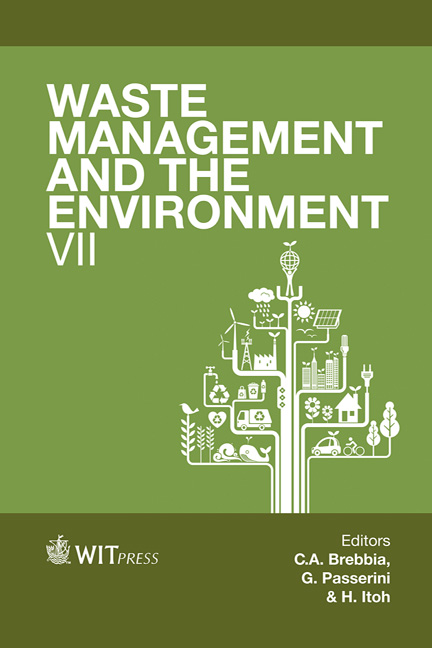Energy Products From Source-separated Organic Waste
Price
Free (open access)
Transaction
Volume
180
Pages
10
Published
2014
Size
533 kb
Paper DOI
10.2495/WM140411
Copyright
WIT Press
Author(s)
G. K. Luk & V. Bekmuradov
Abstract
An effective strategy adopted in recent years for municipal solid waste management is the source-separation of solid waste, most commonly into organics, recyclables such as glass, plastics and papers, and refuse. It has been proposed that source-separated organic waste (SSO) is an excellent lignocellulosic biomass of fermentable carbohydrates, and has the potential to serve as a low-cost feedstock for bioconversion into energy products such as ethanol and hydrogen. To evaluate the feasibility of converting SSO to energy products, a better understanding on the energy contents and highly-variable composition of SSO is needed. This paper is based on the results obtained from a ten-month analysis on the SSO collected from the City of Toronto, Ontario, Canada. Detailed analyses on the composition in terms of the VOC, cellulose, hemicellulose, and lignin contents, as well the amounts of carbohydrates, glucose, xylose and other fermentable sugars are carried out. The experimental results show that the average values of moisture content, at 55%, and VOC, from 65% to 96% per dry mass, was sufficiently high to support microbial growth, making it an acceptable feedstock for anaerobic digestion. The results of SSO are compared to other traditional cellulosic feedstock, such as hardwood, agricultural products, food and herbaceous crops, and it was demonstrated that comparable amount of fermentable sugars are contained in SSO. Keywords: source-separated-organic waste, ethanol, glucose, xylose.
Keywords
source-separated-organic waste, ethanol, glucose, xylose.





